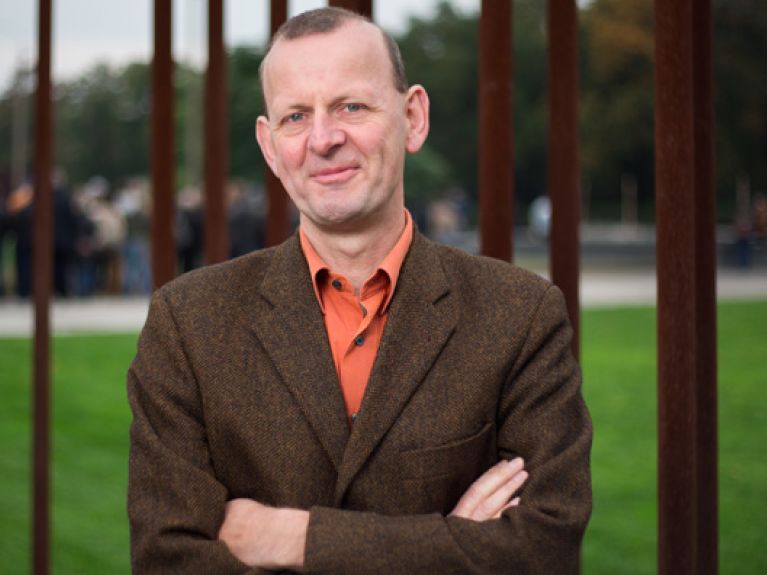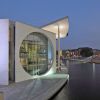Berlin Wall Memorial
On the occasion of the 25th anniversary of the Fall of the Wall, Federal Chancellor Angela Merkel opened a new permanent exhibition at the central memorial site in the Bernauer Straße in Berlin. An interview with Axel Klausmeier, director of the memorial.

What does the Berlin Wall Memorial mean for the commemorative culture of the city?
It’s the largest and now the most important memorial devoted to the history of the division of Germany, not only of Berlin. Last year we had about 850,000 visitors. Remembrance needs authentic sites where people can realize something. This is a place that teaches us the difference between dictatorship and freedom. Here what the SED regime needed in order to exist becomes visible – a wall and an enormous surveillance and monitoring system. The memorial site is important so that people can learn democracy isn’t a matter of course. We have here many international visitors who want to understand many things better. How did this used to work? What did the Wall look like? What was behind it? So this is an extracurricular place of learning, which basically visualizes the former system.
Who are the visitors to the memorial?
We have about 60 per cent international guests. Our visitors are mainly young people younger than 25 years of age. That is, people who have no memory of their own of the Wall. During the week there are plenty of school children, but on the weekend there are families, different generations who walk round our site, learn and reflect. We shouldn’t forget that in the last 25 years since the Fall of the Wall Berlin’s population has changed up to 60 per cent. Many Berliners living in the city today never lived here with the Wall.
How much previous knowledge about East Germany do your young visitors have? Do they learn enough in school?
There’s much room for improvement. It’s sometimes astonishing how little young people learn about the recent past. There should be a lot more in the curriculum. It’s therefore so important that school classes visit our memorial and other memorial sites dedicated to commemorating the division of Germany.
Fall of the Berlin Wall, 9 November 1989

